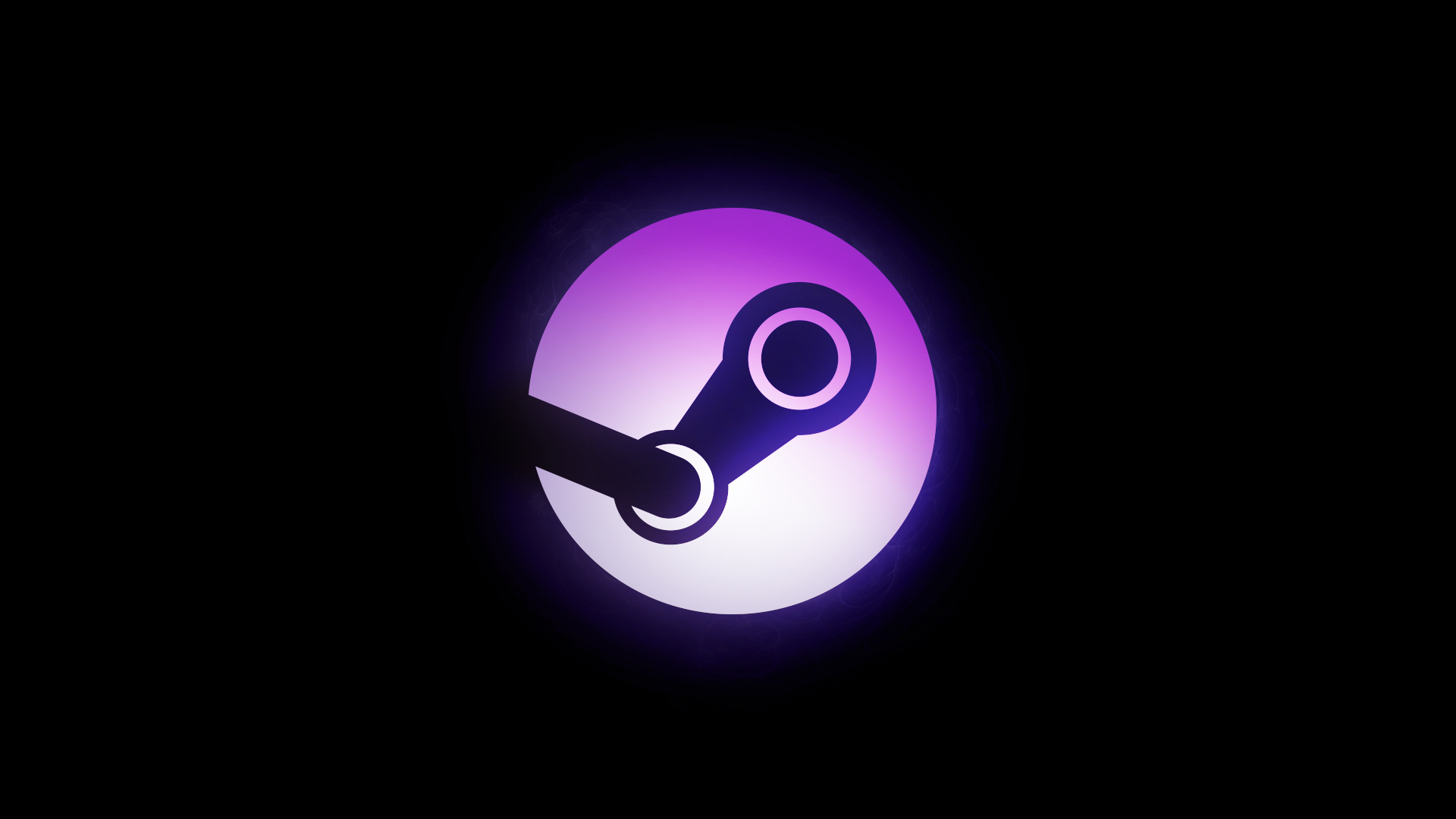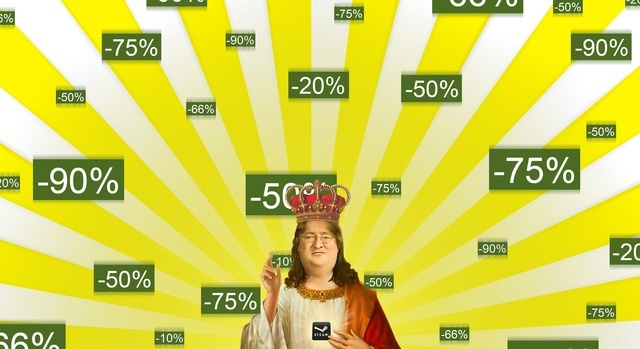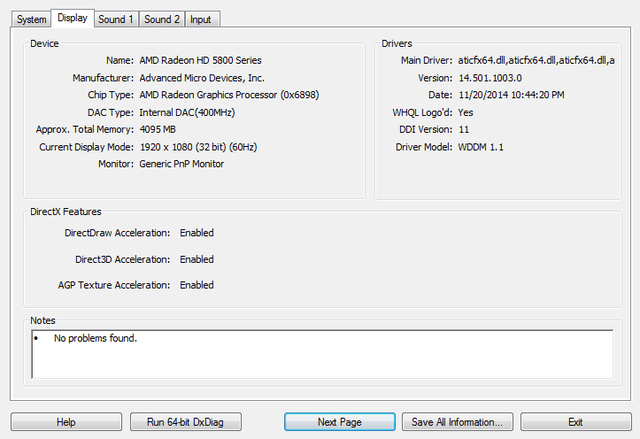It’s hard to believe just how much money we, as gamers, spend on our hobby. Every console generation, new hardware rolls in at high price points. Four hundred to five hundred dollars, on top of all the games being available at full price. For the average gamer, it’s quite daunting.
I am right there with you. When I was younger, I usually had to make a hundred or so dollars stretch across an entire year. So I’m gonna tell you how I’ve managed to keep pace with the gaming world on a shoe string budget. Today, as G.B. Burford so aptly pointed out in my interview with him, a good place for budget gaming is on PC. Let’s talk about how you can use this fact to your advantage:

A Steam-Powered Revolution
When it comes to PC, there are a number of ways to game on the cheap, and no Ubisoft, none of them require Pirate Bay.
- Steam, Amazon, Humble Bundle, and the sales that will make you love them.
- Origin, Desura, and the alternatives that offer something different.
- Steam-share, GOG.com, and modern PC sharing.
- Emulators.
Today, we’re going to start by figuring out what you’re working with, and where you should be focusing on sales with clever planning.
Sales are a normal thing to look to when on a budget, but in the PC market in particular, it’s almost like learning a new dance. Knowing when to check Humble Bundle, Steam, and Amazon is key to maximizing the games you can get for the lowest price point. You’re going to need to prioritize, plan, and keep a watchful eye out.
First thing’s first though — how powerful is your PC? If you’re tight for cash, chances are you are not packing an Nvidia Titan, seven core CPU, and 8 gigabytes of DDR3 RAM. You need to know what you’re working with so you don’t end up buying something you can’t run. Here’s how to get an idea of what your specs are. Open the Windows key, and click the “Run…” button.

Then a little box will appear.

You’re going to want to copy and paste into this box the following: DXDIAG
Within a few minutes, a new box should have opened called DirectX Diagnostic Tool. It will display all of your system’s information. The most important parts to you are your:
- Operating System — So you know whether or not you’re running a 32 Bit or 64 Bit system. We’re not getting too technical here, but 64 Bit operating systems are often able to handle more intensive games. 32 Bit is still a mostly supported option at the time of this writing, but you’ll often see a decrease in performance.
- Processor — Otherwise known as your CPU. This the heart of your machine. Every core your CPU has is one more task it can do at a given moment. So if it only has two cores, it can only do two tasks at once. This doesn’t mean you need as many cores as possible to get the best performance. I can play Dying Light at a consistent frame rate with just four cores. You’ll just have to accept your graphics settings won’t be at Ultra.
If your CPU needs upgraded, you’ll be looking primarily at older titles and indie games until you can get it up to speed. We’ll have some more in-depth PC improvements and need-to-know information later on for if you want to upgrade, but we aren’t covering that today.
- Memory — Otherwise known as your RAM. Memory is quite literally juggling all the data and information your PC’s processor needs to work through. The more RAM, the more things it can juggle and jump between as need be. That’s why you can do a Skype video call on your Xbox One (which has plenty of RAM), but can’t on your Xbox 360 (which has less RAM than some phones).
It’s generally advised you have at least 4 gigabytes worth of memory if you are playing anything released after 2009, and a number of upcoming next-gen titles are requiring a minimum of 6 gigabytes. Thankfully, Memory is one of the cheapest parts to upgrade, normally not exiting the $100 range for decent sets.
Then you will want to click the Display tab and check the Name category. For example, for me, it is the AMD Radeon HD 5800 Series. This is my graphics card. If you’re planning to game on your laptop, you may be using an integrated chip set instead of a regular graphics card. This means it is built-in, and most likely not meant for gaming, at least not at the highest settings.
Desktop PCs will often come with baseline graphics cards, but nothing too fancy. Most current gen games only require games from around the 5800 to 6500 series AMD and their Nvidia equivalents to run stably on a PC. Indies will require even less, for the most part. Lastly, we need to know your Harddrive (HDD).
Now there are various drives available now. There are the faster moving, higher quality Solid State Drives (SSDs), but those also cost a pretty penny despite having a fraction of what a HDD can give you. Consider wisely, as that 256 gigabyte SSD might load games faster, it can only hold about a forth of the data a fairly cheap 1 terabyte HDD can. Most budget PCs come with HDDs, so you’re probably starting off with something in the 500 to 750 gigabyte range. That’s a perfectly fine place to start for right now.

So you know all this technical stuff about your PC’s current capabilities… now what on earth are you supposed to do with this gibberish?
While each PC will vary, there are roughly three categories you will fall into:
- Low End/Indie Class — At best, you might be able to run Half-Life 2 on a machine this low-grade. The advantage is, there are tons of indie games exclusive to PC that could run on a toaster. This just means that you are not gonna be playing Arkham Knight on your PC any time soon, short of performing a major upgrade. GOG.com is also totally gonna be your new best friend. (I.E. Duo-Core CPU, 2 or less gigs of RAM, 32-Bit OS, AMD 4000 or younger gen GPU or Nvidia equivalent)
Sites to watch: Desura, GOG.com, Humble Bundle, itch.io
- Medium/Economy Class — Welcome to my boat! You can things like Deus Ex: Human Revolution with DX11 features but also have Dying Light running at around 30-40 FPS with most of the settings on low. You’ll probably fight and struggle to get everything working in tip-top shape, but you are also the most flexible. You can play indies and recent last-gen games great, and new-gen games on at least acceptable settings. (I.E. Quad-Core CPU, 4 to 6 gigs of RAM, 32 to 64-Bit OS, AMD 5000 or newer gen GPU or Nvidia equivalent)
Sites to watch: Steam, Origin, Amazon, Desura, GOG.com, Humble Bundle, itch.io
- High End/IT’S SO SHINEY Class — Well aren’t you just the luckiest little bugger. You’re basically touting a next-gen console that can also do your taxes, stream and capture video, and emulate most old consoles like it was built to play them. You have little to be concerned about when it comes to compability with pretty much any game. (I.E. Six-Core CPU, 6 to 8 gigs of RAM, 64-Bit OS, AMD 7000 or newer gen GPU or Nvidia equivalent)
Sites to watch: Steam, Origin, Amazon, Desura, GOG.com, Humble Bundle, itch.io
Depending on where you sit, you’ll end up looking at very different places to keep an eye on and aim for. The key thing is to recognize what your PC is capable of, and milking that for all its worth. Having access to just one of these services can provide you with hundreds of games, even if you’re on the Low End.
Now, how do you handle keeping track of them all?
Well, conveniently most of them have e-mail alert services. On Steam, adding items to your wishlist will set Steam to e-mail you when those games are on sale or have a permanent price drop. GOG.com and Humble Bundle put out regular e-mail newsletters you can sign up for. Amazon and Origin deals almost always appear on the Kotaku’s weekly discount posts. Beyond that, just check in every now and then.
That’s the big problem with sales hunting after you’re ready to go. It’s a lot like an actual hunt. You aren’t constantly on the move, jumping from deal to deal. You often have to wait it out, taking a shot when you’re confident you’ve got the right target.
Sometimes you’ll pull off getting twenty games for $100. Other times, you’ll waste $37.95 on the Injustice PC port and just a few months later see it for $12.99 or less. You take the wins with the losses. My current aim is to never spend over $20 unless it is a genuine “sure thing”.
Now, this isn’t the end-all, be-all of budget gaming. Next time, we’re going to take a deeper look at these services, and how they’re useful for more than just sales. Free games, game sharing, and more! Same Skinny time, same Skinny place. Have any questions or feedback? Let me know in the comments below!








Published: Apr 24, 2015 03:47 pm